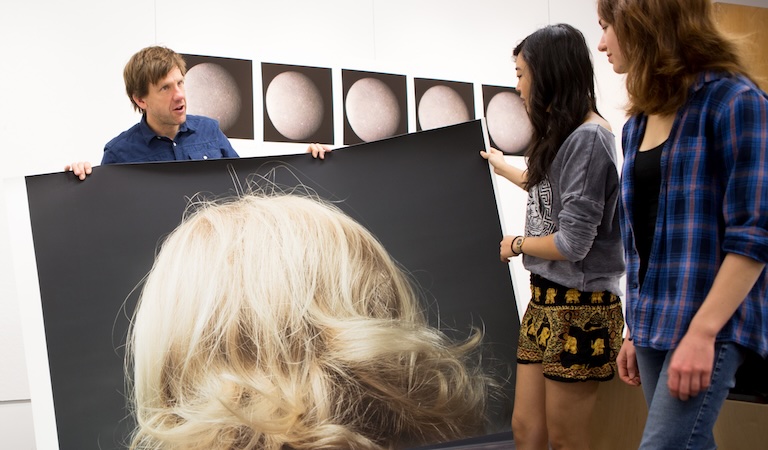Innovation Accelerator Showcase

Lab for Art, Science and Technology
The Opportunity
Traditional academic structures often separate art and STEM disciplines, limiting opportunities for students to explore the ethical, cultural, and societal dimensions of technological and scientific innovations. This siloed approach constrains creative thinking and interdisciplinary problem-solving, both of which are essential for addressing today’s complex challenges. Without a dedicated program that integrates art, science and technology, students at Harvey Mudd College miss out on opportunities to apply cutting-edge technologies in creative ways that foster public engagement and societal impact.
The Big Idea
Create the Lab for Art, Science, and Technology (LAST), an interdisciplinary program that blends art and STEM practices to explore their intersections with society. LAST will provide workshops, curricula and collaborative projects that use technologies like virtual reality, robotics and projection mapping to create digital storytelling and interactive installations. Housed in the new Science and Engineering Building, the program will serve as a hub for exhibitions, guest lectures and corporate partnerships, promoting critical thinking, creativity and societal engagement through the integration of art and technology.
The Plan
The initiative will focus on creating a vibrant, interdisciplinary program that integrates art and STEM education through key strategies:
- Curricula and Workshops: Develop courses and workshops on topics such as AI ethics, the cultural impact of technology, and the mathematical foundations of art to foster critical thinking and creativity.
- Collaborative Projects: Encourage interdisciplinary teams to address real-world challenges through art-based projects, such as designing interactive installations that tackle social or environmental issues.
- Corporate and Community Partnerships: Cultivate collaborations with industry leaders like Adobe, Apple and Microsoft to enhance learning opportunities.
- Enhanced Facility to serve as Learning Hub: Establish the new Science and Engineering Building as a hub for innovation and creativity, hosting exhibitions, guest lectures and community events to showcase student work and engage the broader community.
The Impact
LAST will transform the way students approach interdisciplinary education by integrating art and STEM to develop innovative solutions to complex societal challenges. Art can serve as a powerful medium for public engagement, making complex concepts, such as climate change, AI ethics, and healthcare, more accessible and relatable. This interdisciplinary approach enhances scientific analysis and innovation while also strengthening the connection between STEM, public policy and society, inspiring future local, national and global leaders to shape technology that serves humanity equitably and meaningfully.
Share this Proposal
Proposers
- Jon Ebueng, technical analyst
- Gilbert Gutierrez, technical analyst
- Ken Fandell, Michael G. and C. Jane Wilson Chair in Arts and Humanities and professor of art
- Lucas Bang, associate professor of computer science
- Rachel Mayeri, professor of media studies
- James Sadler, senior instructional technologist
- Isabel Beavers, Hixon-Riggs Early Career Fellow
- Jia Yi Gu, assistant professor of architecture